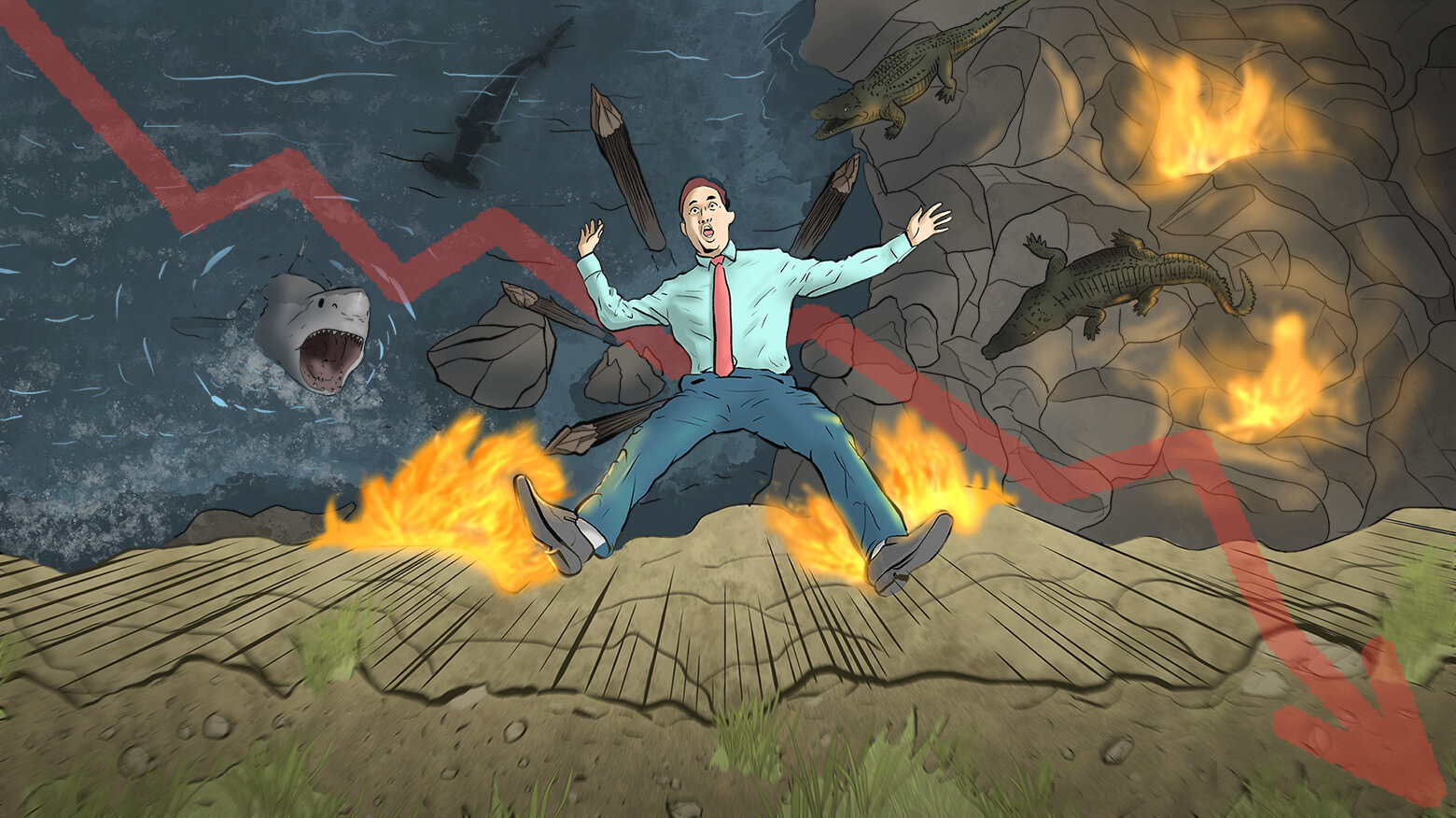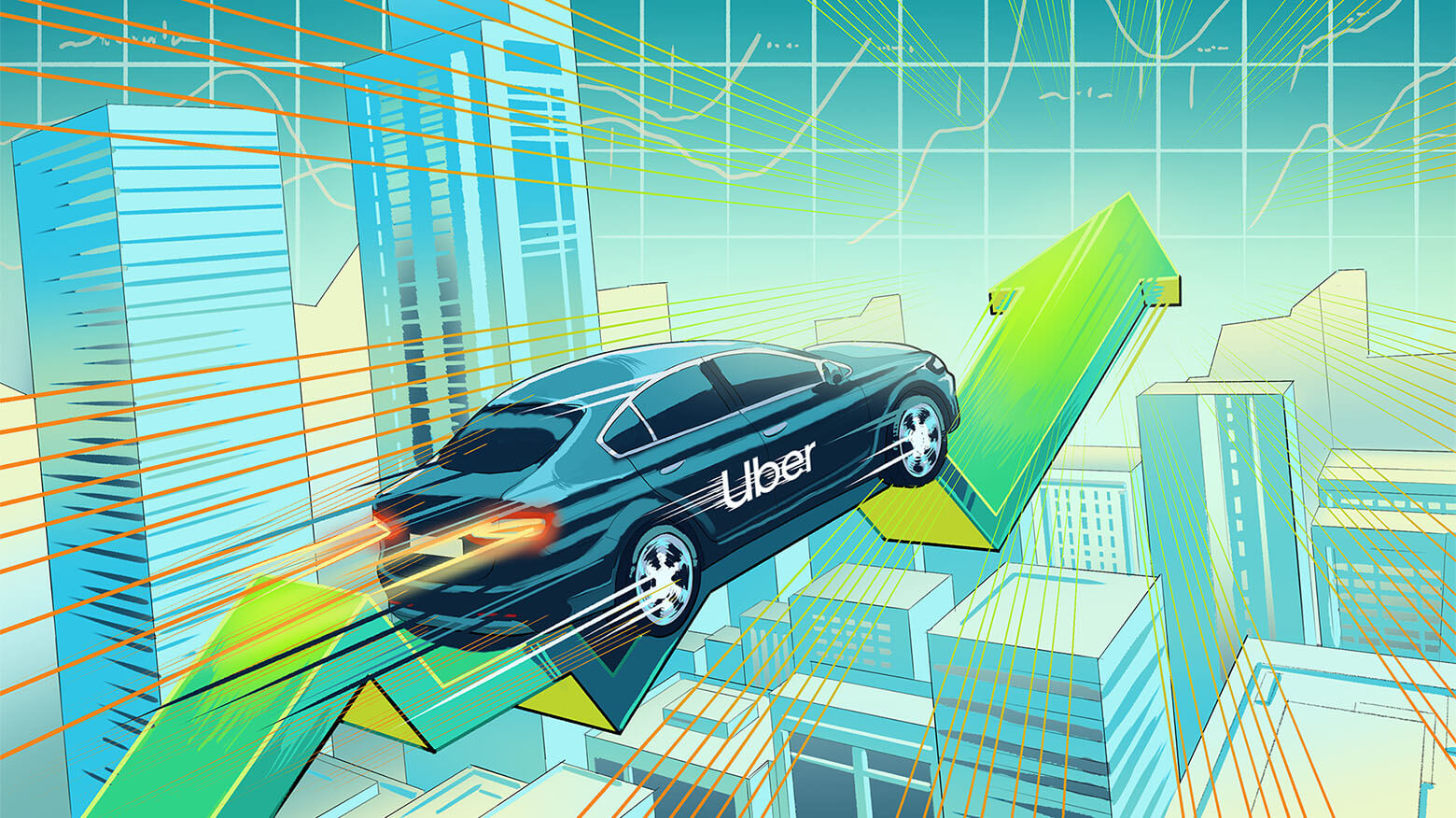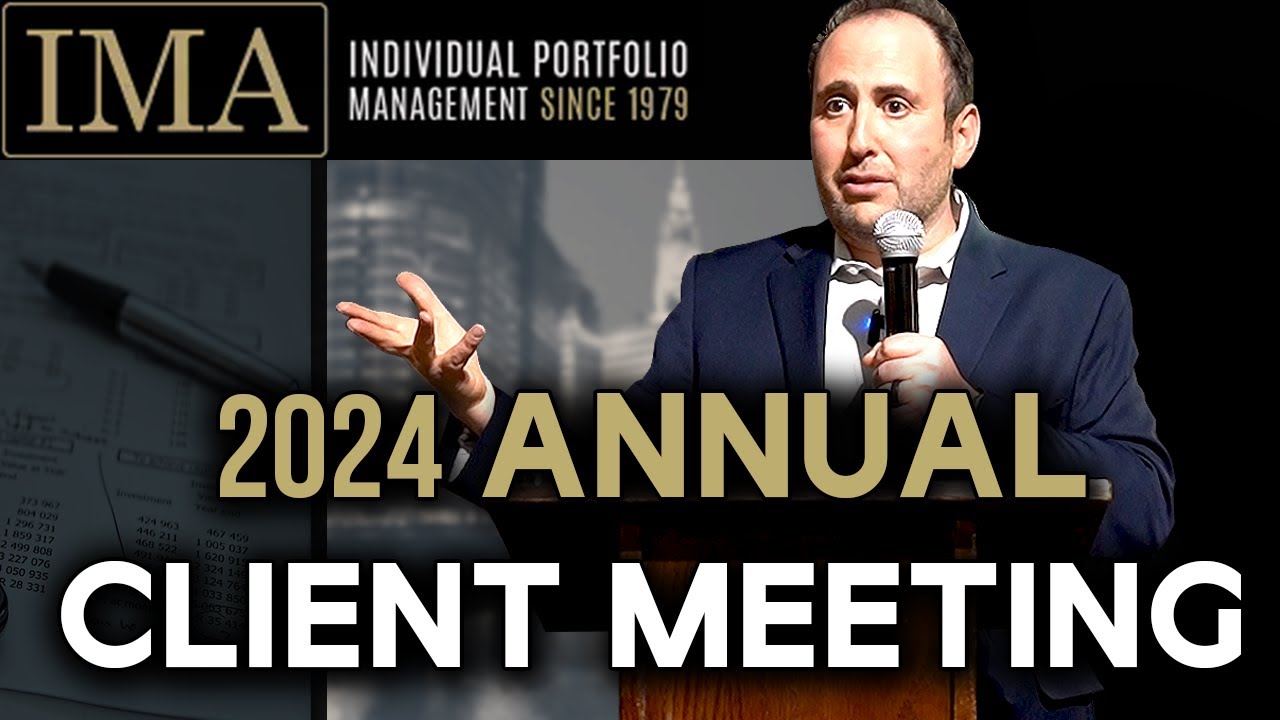We all played this game when we were kids. You say a number. Your friend tries to demonstrate his knowledge by saying a bigger number. At some point you proudly get to infinity – the largest number of all. Your friend doesn’t blink; he says, “Infinity times a hundred,” then he thinks for a second and spouts out, “Infinity times infinity!” How do you beat that? When assets get overvalued and get into crazy territory, explaining their overvaluation feels like playing this “infinity times infinity” game. But at least, if we line up different crazy valuations next to each other, it is going to be easier to distinguish levels of craziness.
Let’s start with the least crazy of all the crazies – bond-substitute type stocks.
In this example I’ll focus on Coca Cola, but I could have written this about almost any consumer goods company – the likes of Kimberly Clark, McCormick, WD-40, and many others that pay a stable dividend.
Coca Cola has been spreading joy (and diabetes) globally since 1886. It is truly an incredible business: the company makes a concentrate and ships it to bottlers, who put in the hard capital, bottle that syrup, and distribute it to every corner of the world. Coke, in concert with its bottlers, has the best distribution system in the world.
Since bottlers do all the heavy lifting, this business earns a very high return on capital. Coke is one of the most beloved brands in the world (unless you are a Pepsi person). This company has experienced incredible growth over the last century. However, unless Coke gets penguins at the South Pole to consume its fine bubbly, it has run out of new markets to sell into. This is exactly what has happened to Coke since 2010 – its revenues and earnings have stagnated. If you look at its financials, only two things have grown: its dividend (due to an increased dividend payout) and its debt – which has tripled.
Coke is a high-quality company – it can raise prices along with inflation on its namesake product, which is about half of its revenue. It may struggle to do this on other more commoditized parts of its product portfolio, but nobody questions whether Coca Cola will be around in ten or twenty years. Most importantly, investors are convinced Coke will continue to manufacture its 2.6% dividend till the end of time. They are so focused on the shiny object – the dividend – that they are ignoring how much they are paying for this seemingly endless income stream. Mr. Market will let you have Coke today at 30 times earnings.
But.
What happens to Coke’s stock price if interest rates dare to go up? Coke’s 2.6% “infinite” dividend will not be so shiny when interest rates go up a few percentage points. If the 10-year Treasury is yielding 5%, Coke’s dividend will lose its luster and the stock will decline to a valuation multiple with a “1” in front of it. Today, many Coke shareholders are experiencing what behavioral economists call “empathy gap.” They tell themselves, “I am fine even if the stock declines 30–50%. I will stick with getting my 2.6% dividend, which will rise with inflation.” However, when the stock price declines and safe alternatives offer double the yield, they’ll change their thinking – thus the gap.
Side note: Dividends don’t need to be a shiny object that lead you to eventual financial ruin if/when interest rates rise. Just change the sequence of your analysis. Here is what we do at IMA in dividend portfolios: We identify the universe of stocks in the US and other countries that pay stable dividends, but only the ones that are both high-quality and undervalued end up going into the portfolio.
Coke is a lightweight on the crazy spectrum. The degree of crazy will increase with each further example, culminating with smelly, hot air, I promise.
The next one is Tesla. I’ve spilled a lot of ink on this company. I even wrote a series of essays that I turned into a small book (you can get it here). I love my Model 3. Almost three years after I bought it, I still enjoy driving it, and I am not even a “car guy.” We are about to get my wife a Tesla. I like a lot of things about the company.
But.
The stock is a very different matter. An important lesson that many tech investors learned after the bursting of the Dotcom 1.0 bubble in 1999 and the Dotcom 2.0 bubble in 2021 is that there is a difference between a good company with great products and a good stock. The connecting tissue between the two is valuation. The price you pay determines your future return. The price did not matter when valuations were rising. It will when they aren’t.
Tesla arguably has the best EV on the market. Customers love its products. This is not a little thing. Unlike the Detroit Three, the German Three, and the Asian Five, which spend tens of billions on advertising, Tesla has zero advertising budget. Hundreds of thousands of its fanatically loyal customers are its marketing force. Most car companies don’t have that type of goodwill. These billions of dollars of savings Tesla can put into more R&D or lower prices or higher profitability.
But.
Tesla has a market capitalization of a trillion dollars, or roughly equivalent to what the whole rest of the global auto industry is worth. When it was at half a trillion dollars (half an infinity ago), I described its valuation as “discounting a temporal wormhole into the future.” Today it is priced at double infinity.
Let’s move on to the next level of crazy.
GameStop is in the hands of self-described “apes” that are standing for the little man against the corrupt system and are willing to blow themselves up financially while propping up the prices of worthless companies. GameStop is a retailer of packaged games while the world is moving to digital downloads – a tsunami that is going to wash away this brick-and-mortar retailer. At its peak in 2016 the company made $400 million of profit. Its revenue has declined by half since and it is losing money. The apes are pricing this dying relic at a $10 billion market cap. Its valuation is at almost an all-time high, when its financial situation is at an all-time low. Imagine you won a $10 billion lottery. Would you invest it in an imminently melting, money-losing ice cube whose revenues will eventually dwindle to zero?
GameStop makes Tesla look like a value investment. At least Tesla is a company of the future.
Of course, there is another “ape” stock – AMC, the movie theater chain. AMC has often lost money throughout its existence; before the pandemic it made $110 million. Its revenues are down by two thirds since then, while its share count is up 4x and debt is up 5x. Today, after the stock has declined by 50%, you can have this darling for only $11 billion, and it comes with $10 billion of debt. At least GameStop has a net cash balance sheet.
Then there is the crypto universe insanity. I’ve spilled a ton of ink on Bitcoin in the past, but I’d like to point out again that there are thousands of competing cryptocurrencies fighting for dominance. For Bitcoin maximalists, Bitcoin is their only lord and savior and all other cryptos are heretics. Many, however, believe that Bitcoin is an inferior, crypto-stone-age type of technology and that new, technologically advanced alternatives are better (thus the thousands of cryptocurrencies). As I am typing this, it dawns on me that arguments about which cryptocurrency is superior are not unlike medieval debates about which religion is better. We all know which one. Unlike religious debates and ensuing wars, the crypto debate will end quite peacefully, with people losing money.
Since cryptos have no cash flows, I have no idea what their value is. However, considering that prices of all speculative assets have skyrocketed recently (just look around you), my gut sense tells me that the price of cryptos today reflects an overabundance of both optimism and easy money.
But.
Then we have the whole new level of crazy: NFTs (nonfungible tokens). You put a drawing of a flying monkey or a happy goat on a blockchain and you have got priceless, “finite,” “nonfungible” art. NFTs of apes that happened to be bored are selling for hundreds of thousands of dollars.
My son Jonah, a student at CU Boulder, told me that many of his friends are making money in NFTs, and most importantly, they’re bragging about it. They have suddenly become connoisseurs of digital art.
Jonah told me about the latest and greatest NFT: Ozzy Osborne of Black Sabbath fame recently decided to become a crypto artist and will drop “only” 9,500 drawings of bats, which Ozzy calls “crypto bats.” To get Ozzy’s art at a “wholesale” price, you must go on his discussion board and tell the world how much you love it. If you do this enough then board moderators may let you buy it at wholesale, so you can flip it to a greater fool at “retail,” who’ll try to flip to another even greater fool for a higher price after he brags how much money he made on NFTs, which are our digital future! Jonah asked me, “Dad, is that not by definition a pyramid scheme?” I am a proud parent!
As I am typing this I have caught myself wanting to say, every other sentence, “I kid you not.” So maybe we’re approaching the pinnacle of crazy.
When I discuss Coke, its overvaluation is not an abstract concept; it is quantifiable in brush–stroke terms. Even Tesla’s overvaluation is not entirely abstract – you are paying more for a company that produces a million cars a year than the rest of the industry that produces 40–50 times more cars.
Everything beyond that, from GameStop and AMC to crypto and NFTs, might easily be worthless and thus quickly turns into an abstract discussion. How much will Ozzy’s crypto bats be worth when the last college kid blows his tuition on them? I have an answer for you: zero! When zero is priced in relation $300 or $30,000, it is overpriced by infinity; in either case the loss is 100%. Actually, in many cases the losses will be greater than that. What we learned from previous bubbles is that greed and FOMO eats people from the inside and causes them to resort to leverage. Leverage ruins people’s lives, and it has never been easier to borrow money than it is today. Sadly, a lot of people who are beating their chests and bragging how much money they are minting today will lose their temporary gains and a whole lot more.
The ultimate prize for crazy goes to Stephanie Mato – actually, not to her but to the people who spent $200,000 buying her farts in a jar. Stephanie had to make a personal sacrifice in order to produce them, resorting to an unhealthy, gas-producing diet. She had a mild health scare and decided to quit, but don’t worry (I kid you not), she is now making NFTs.










I’m trying to understand why banks and countries are investing in crypto. Now that is a pyramid.
I always enjoy the stories about your children.
From St. Louis
Well written and completely sensible. Intuitively the average ‘ape’ should be able to see through theses scams…but as PT Barnum said; ‘a sucker born every minute’. Thanks Vitaliy for your voice of reason and common sense. Cheers from Canaduh (where there is very little reason under the current regime).
Well written! That kind of education should be mandatory in ever high school and university! Yeah I’m dreaming… Best from Germany 🇩🇪
You are wrong about crypto. You already admitted that you don’t have a way to reliably valuate them yet you deemed them “worthless”. That’s an oxymoron in itself.
Thanks for the article. I really enjoy reading the stuff you publish. It would be also interesting to have more comments about the macro economic situation you you see it.
Another great article, I posted some of this for my investments class. Admittedly, I missed the “fart” boom. I’ll never get to a billion at this rate.